Seeing a beautiful sunrise from an altitude of 10531ft with all the majestic Himalayan ranges is worth every strenuous walk it took to get there. Such is the feeling you get after reaching the top of Poon Hill situated in the Annapurna region of Nepal.
Table of contents
Poon Hill Trek Details
- Difficulty: Easy to Moderate
- Highest Elevation: 10531ft
- Elevation gain: approx. 5676ft
- Elevation loss: approx. 4203ft
- Time: 4–5 days
- Closest Major City: Pokhara
- Permits: TIMS Card, Annapurna Conservation Area Project Permit
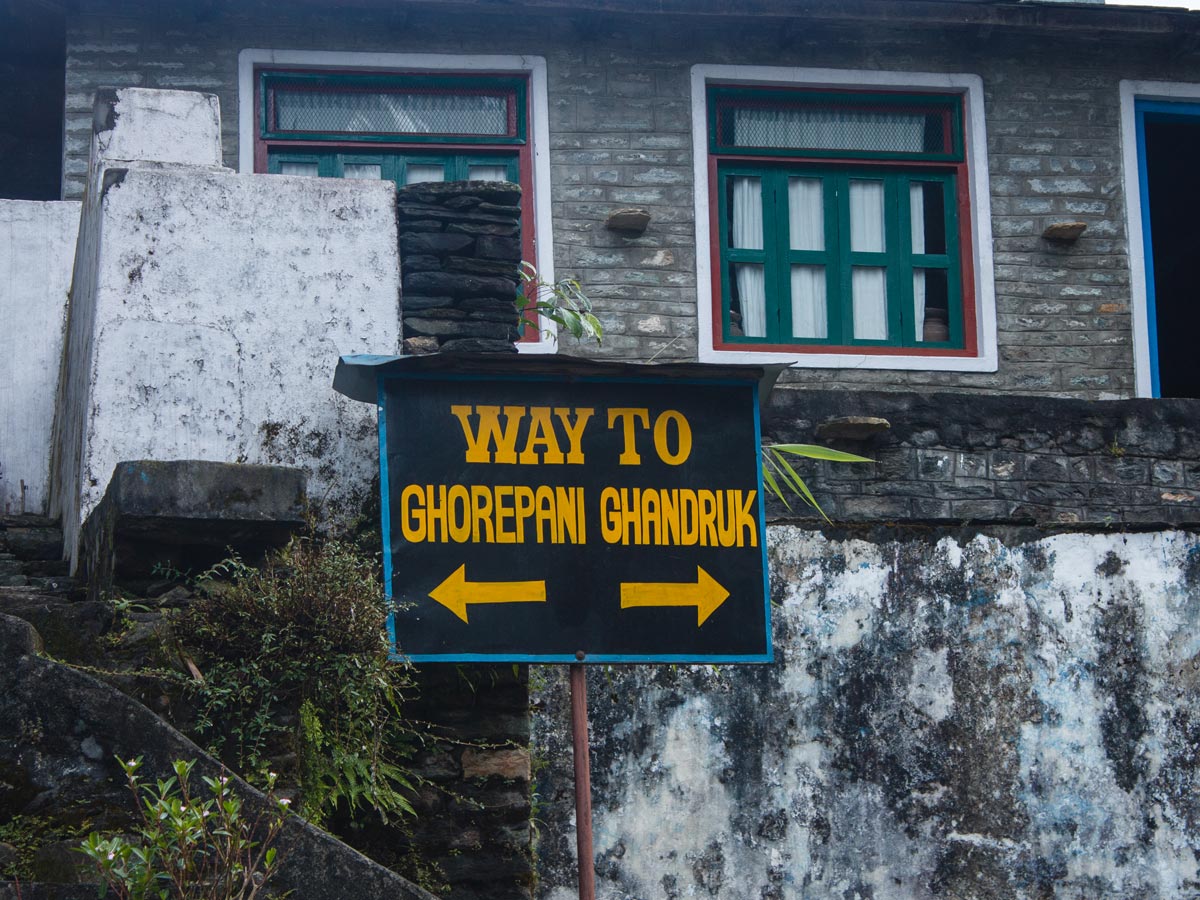

Poon Hill Trek: Detailed Itinerary
The Poon Hill Trek is an unforgettable 4-day journey through the Himalayas. You’ll see views of the majestic mountains as soon as you leave Pokhara and head to the starting town of Nayapul. Along the way, you’ll walk along flat, paved roads, rocky terrain, about 3000 stone steps (yes, 3000), and through lush forests and fields of rhododendrons. Meet and engage with the locals by sharing a cup of chai in one of the many lodges. Spend your nights in basic teahouses with decent beds, delicious food (especially on Day 1), and unbelievable views. This trek will get your heart pumping, especially when faced with the challenge of climbing 3000 stairs or getting up at the crack of dawn to witness the sunrise from Poon Hill. This journey will be full of soul-warming moments and definitely worth the effort.

Day 1: Drive to Nayapul; Trek to Tikhedhunga
Start early as you drive approx. 24.9mi northwest from the lake city of Pokhara to Nayapul to begin your trek to Poon Hill. You can hire a jeep or take a bus from the Baglung Bus Park at Pokhara. If you want to have a comfortable ride, then hiring a jeep is recommended. On your way to Nayapul, you pass through Phedi, Naudanda, Kande and Lumle, and no doubt that the views from these places are indeed majestic. After almost an hour and a half drive, you reach Nayapul.
After you cross Nayapul, you reach Birethanti, where you come across many small markets selling you props required for your journey. It’s better if you stock up on some extra batteries and snack bars here as they might cost you a little extra as you go up. After descending further down from Birethanti, you move towards the first iron bridge and take the left trail that leads to Ghorepani (the right one leads you to Ghandruk). The iron bridge, below which the Modi river flows, is one of the many bridges you will encounter throughout the trek.
The trail is relatively flat and easy to walk with walking mostly through rocky terrains. You pass through a waterfall and then cross another suspension bridge to reach a Hindu temple in Ramghai. You can see a lot of local vendors selling fruits, vegetables and other items urging you to buy some of their products. Ramghai is a good place for a lunch stop as you get to see the beautiful green hills as you eat. From here, it is mostly climbing the rocky stairs though an easy one. The trail is filled with mules carrying loads of supplies, as it is one of the few ways of transporting good to higher lands. You might have to take occasional breaks to let the mules pass by. Many small lodges and restaurants can also be seen on the way.
After climbing for about 2 hours or so, you reach Tikhedhunga at 4856ft. Tikhedhunga is a small yet beautiful settlement on the Ghorepani-Poon Hill trail where you get warm and quintessential hospitality. Stay in the Laxmi Guest House at Tikhedhunga. Although it is a basic teahouse for you to spend the night in, the bamboo grove house has everything you fancy. The sit-out area is the perfect place to sip a cup of coffee while enjoying the beauty of the surroundings. The rooms are simple yet comfortable. The toilets are shared. You can only charge your electronics in the dining hall, and a hot shower is provided for an extra price. The food is exceptionally good here compared to the other lodges in the area. Take a good rest as tomorrow is going to be a strenuous journey.

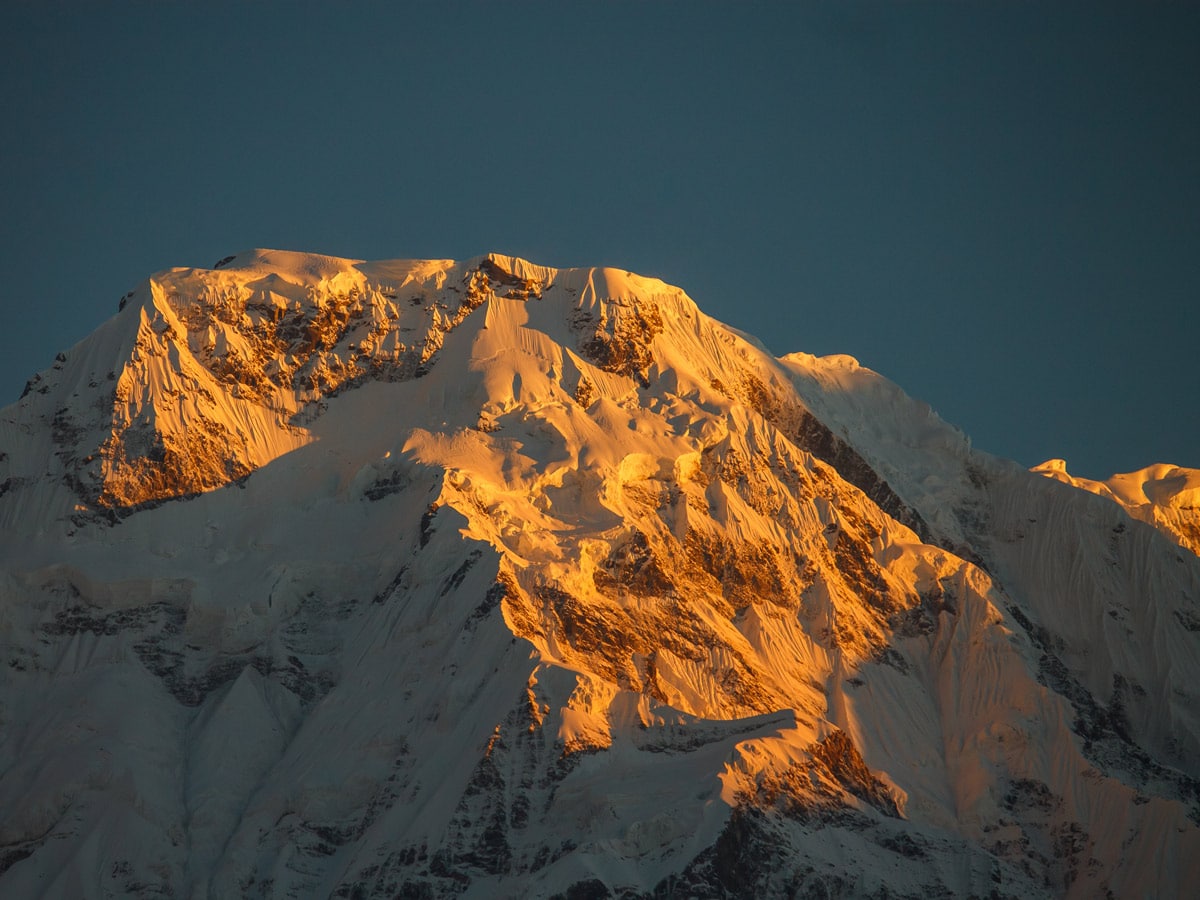
Day 2: Trek to Ghorepani
You don’t see much of the views or the sunrise from Tikhedhunga as the area is covered with numerous tall trees. Nevertheless, mornings are really glorious in the region where you’re far from all the traffic, dust and pollution. After a hearty breakfast, you start the most challenging part of the whole trek as you must climb more than 3000 stairs and the trail is a steep uphill for most parts of the day. An early start is recommended to reach the destination, Ghorepani, before the light is gone.
After walking for 5 minutes from Tikhedhunga, you come across one of the many suspension bridges you’ll be walking through today. The infamous steep stairs come within 20 minutes after you cross the bridge. It is going to be a long and hard day. So, buckle up and start steadily walking through the stairs. Don’t push too much as you’ll be out of breath soon, which will further add to your tiredness. Although dominated by mountain mules through most of the trail, it is a peaceful walk to Ghorepani. Pass through picturesque villages and settlements where the locals greet you and offer you to take a rest in their huts. There’s a school nearby, so you’ll be frequently accompanied by school kids exchanging smiles. The snow-capped mountains start to appear as you get closer to Ulleri (6430ft). Take a pit stop at a teahouse in Ulleri and congratulate yourself for enduring a steep trail, although the uphill doesn’t end here.
You walk through stone-paved trails on a flat surface with the Annapurna South and Hiunchuli mountains ever-present in the view. Leave behind the terraced fields full of corn to enter a lush green forest filled with rhododendron. You will notice the difference in the weather as well as the flora as you climb higher. Walk past the dense forest with small waterfalls flowing on the side of the trail to reach another village Ban Thanti. The English translation to Ban Thanti is a rest house in the forest (Ban= Forest, Thanti= Rest House), a literal translation as the teahouses are in the middle of the forest. You can choose to take a lunch break here or walk for another hour to reach Nange Thanti. Both these villages provide appetizing food though Nange Thanti offers relatively more teahouses. After lunch, follow the trail until you reach the gate of Ghorepani (9383ft) that says, “Welcome to Ghorepani Poon Hill.” Almost every teahouse and hotel at Ghorepani are coloured with blue, so it is an iconic sight to see the admirable village. Ghorepani houses the highest number of lodges in the whole trek area and it doesn’t matter where you stay for the night. Almost every lodge offers the same facilities. The rooms are nice, particularly the ones with a view of the village and the food is fresh and scrumptious. Stay at Snow View Lodge, where you can sit on their balcony whilst enjoying the view of the majestic mountains with a hot cup of tea.
You have to wake up very early in the morning tomorrow as hiking up to Poon Hill is the trek’s focal point. Have a good sleep and rest your sore muscles from walking today’s steep trail.
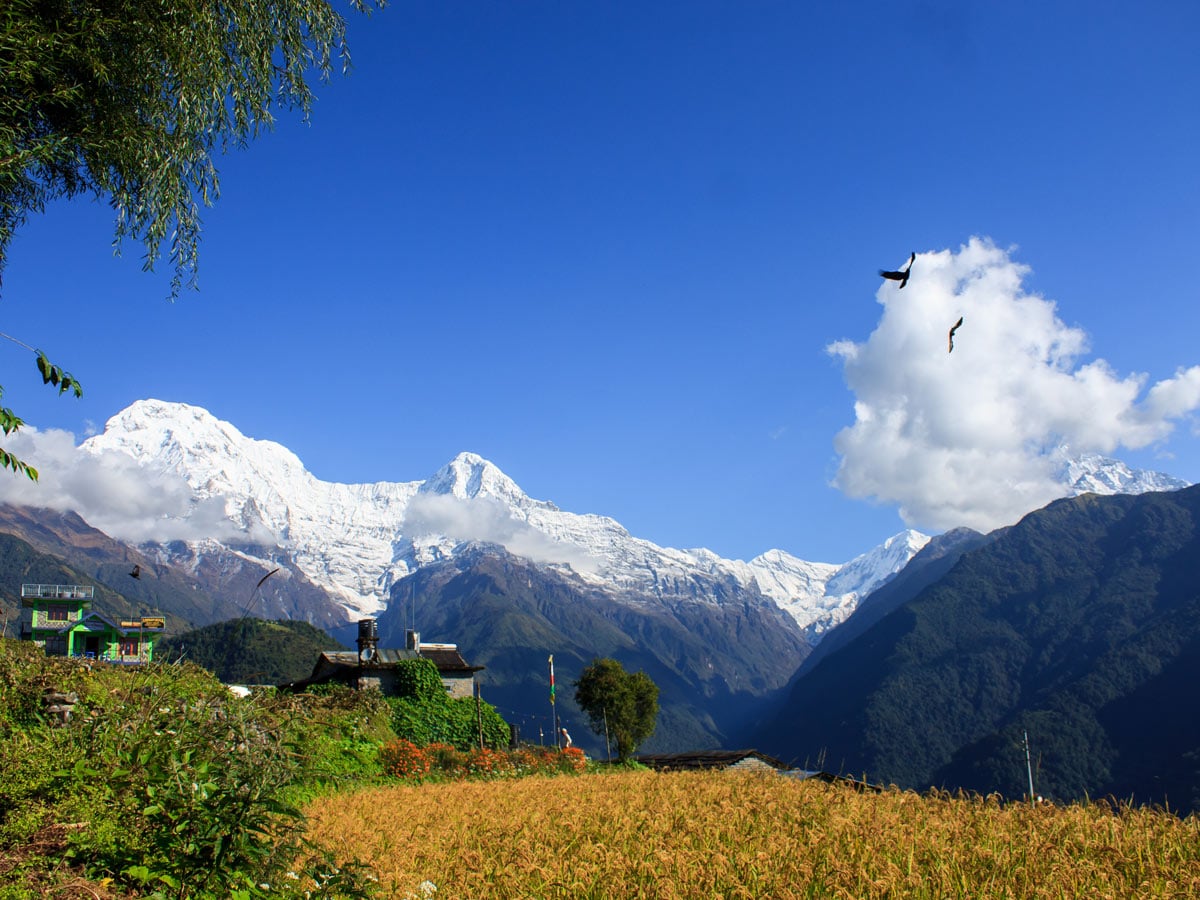
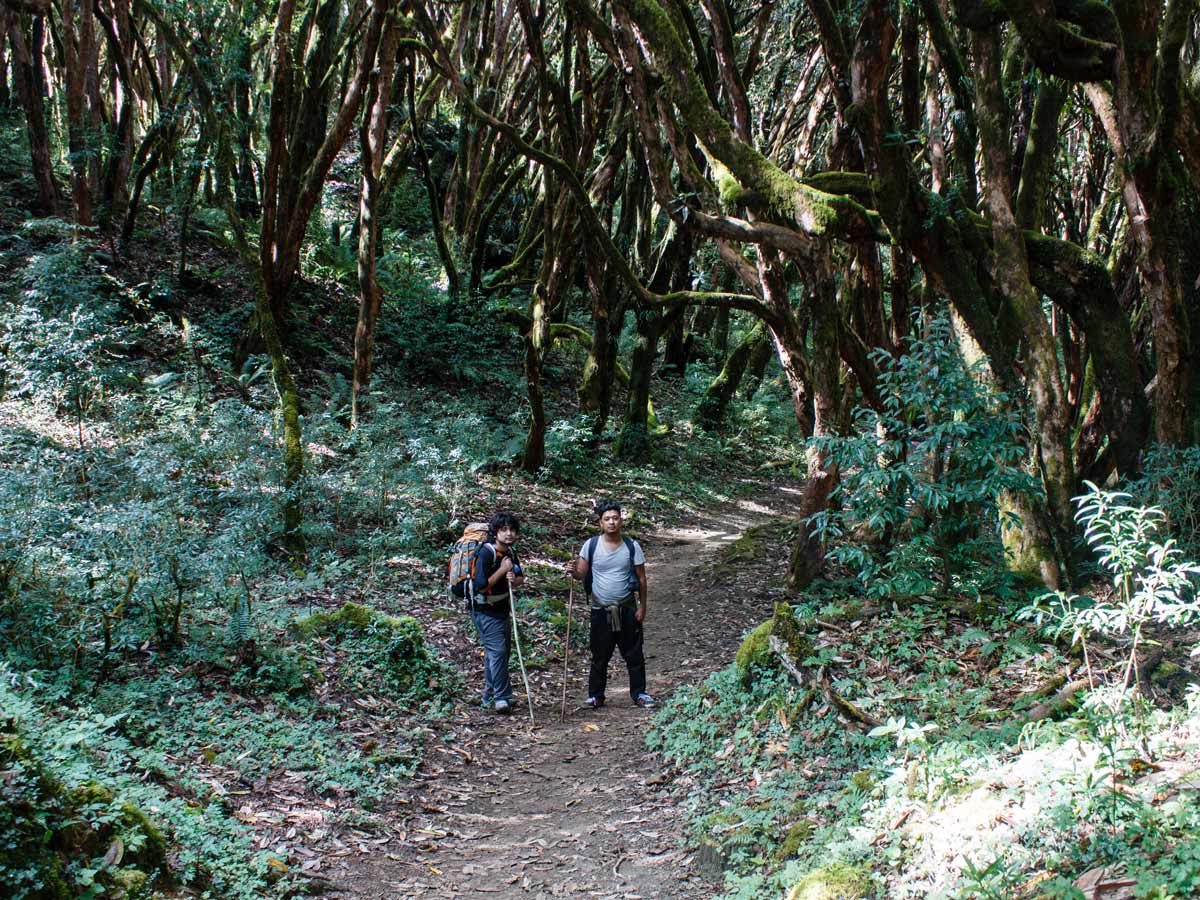
Day 3: Morning hike to Poon Hill; Trek to Tadapani
If you don’t want to miss the splendid sunrise from the viewpoint of Poon Hill (10531ft), then you have to wake up around 3:30–4:00 am, no matter how sluggishly. After a cup of coffee or tea at your guesthouse, be sure to leave with a head torch and warm clothes to protect your body from the freezing cold in the high altitude. It’s not that hard identifying the trail leading to Poon Hill as you’ll see plenty of hikers going up. On the other hand, the trail is a steep, laborious climb with intricately paved stones all along the way. The climb is definitely worth it for the magical views you see from up top. As the sun rises, a vast panorama that stretches from Mt. Dhaulagiri (26795ft) to Mt. Manaslu (26759ft) with the Annapurna range and Mt. Machhapuchre (22943ft) in between is seen. The rising sun will warm your body, whereas the landscape will warm your soul.
After coming down from Poon Hill, have your breakfast and start hiking to the next destination for the day, Tadapani (8629ft). The trail today is a mixture of flat paths, uphills, and downhills. It is quite an interesting route in terms of the landscape you see, the majestic mountains you encounter and the people you meet on the trail. Just after leaving Ghorepani, you navigate through steep stairs amidst a dense forest filled with rhododendrons. There is a resting place perfectly placed right after the end of the stairs. After taking a significant amount of time for rest, descend to reach Deurali Pass (10138ft). Deurali also offers some spectacular views of the mountains, as seen from Poon Hill but from a lower altitude. The pass runs along the ridgeline of the hillside, decorated with prayer flags in a stone slab just like every other high pass. The path is a narrow one, arranged with wooden logs serving as stairs with the dwindling sequence of hills seen from either side. The trail after Deurali takes you deep into the valley and the pine trees start to appear along with countless waterfalls. One such notable waterfall lies on the way to your lunch stop at Banthanti. During monsoon, the waterfall is huge and just hearing the sound of it refreshes your body. You’ll also see a lot of unique trees with moss and grass hanging out of them. After descending another set of stone stairs, you reach Banthanti and have a delightful lunch.
The trail after Banthanti to Tadapani is quite similar except that the rhododendrons start appearing again, making the landscape look like a painting. This trail is filled with different types of pretty birds that you hear singing from the tall trees towering above you. Abandoned wooden houses, hanging prayer flags, gushing waterfalls and damp forests are abundantly distributed all along the trail. After crossing a small wooden bridge, the last climb to Tadapani begins, which you secretly enjoy after hurting your knees by walking down too much. Tadapani is a small, charming village where you can see the Annapurna II, Machhapuchre, Annapurna South and Hiunchuli mountains on a clear day. Stay in the Super View Lodge, which offers a superb view of the lush green valleys with the staggering high mountains. The rooms are comfortable and the amenities are the same as in previous days. Enjoy the reflection of the sunset on the mountains and doze off for your last trekking day tomorrow.
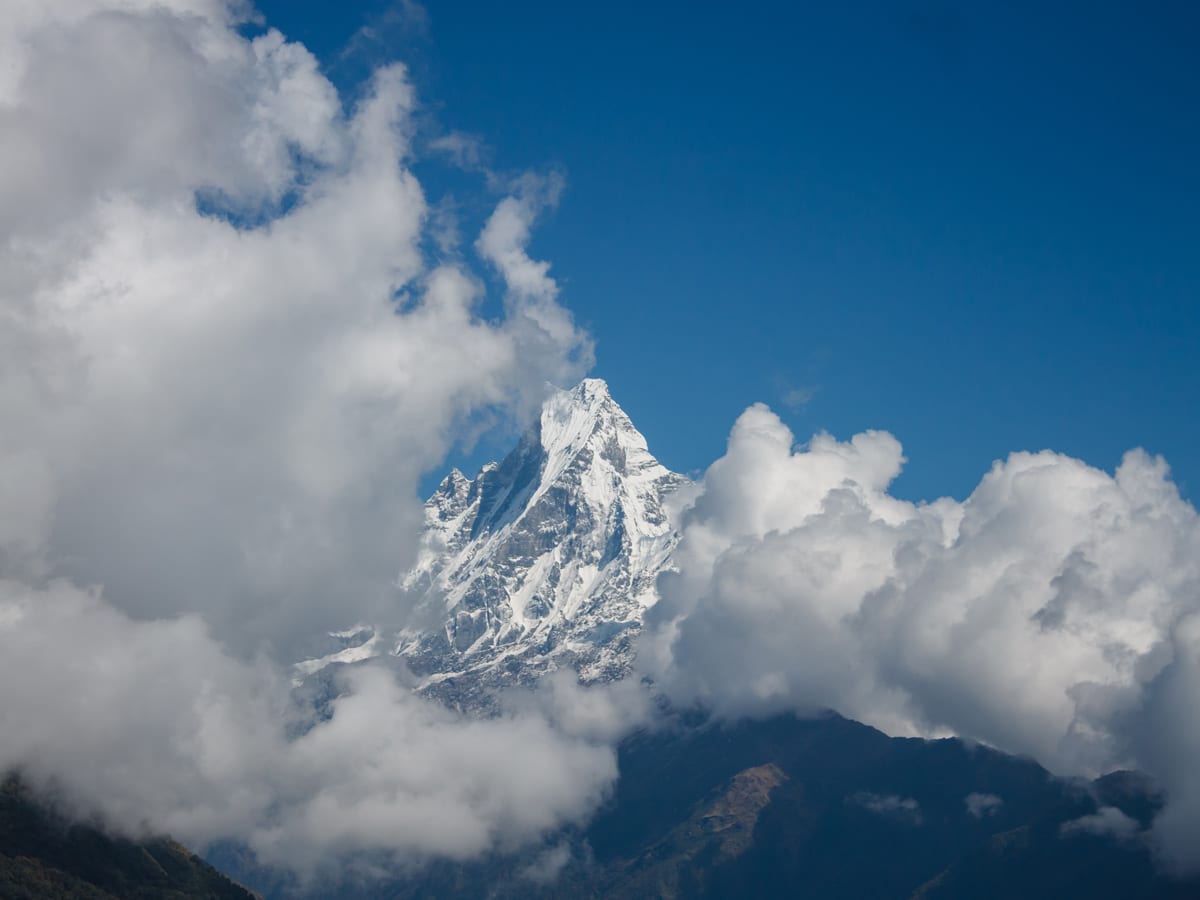
Day 4: Trek to Ghandruk; Drive to Pokhara
You have the liberty to sleep in later today as you only have a short distance to Ghandruk (6365ft) and take a 4×4 jeep or a bus back to Pokhara from Kimche. Tadapani has many conjoining trails: the trail that you came in yesterday from Ghorepani to the west, to the north is the trail to Khopra Danda and to the east is Ghandruk.
After the morning rituals, head east down the trail. The walk is super easy today with only a hint of uphill and mostly down and flat trails. Continue through the forest with mushrooms, fern and moss omnipresent all along the trail. You encounter a couple of stairs with small waterfalls flowing on the side, a joy to watch. Small suspension bridges decorated with prayer flags appear now and then. You reach a large clearing filled with buffaloes known as the Bhaisi Kharka (the Nepali word Bhaisi translates to buffalo). You’ll be urged to stop at Bhaisi Kharka by the fascinating Gurung people for a special lemon tea.
After leaving Bhaisi Kharka, you arrive at Ghandruk in no time. From Ghandruk, there are uninterrupted views of the Annapurna range and the iconic houses of the Gurung community. Ghandruk has a small museum that you can visit to dive into the local culture of the people there. A small gumba is also present if you are the religious type. Have your lunch at Ghandruk and walk for another 20–25 minutes to get to Kimche. You can hire a jeep or take the local bus back to Pokhara. Although it is possible to walk from Kimche to Nayapul, due to the road’s construction and expansion in the mountains, the once-most-sought-out trekking trail from Ghandruk to Nayapul has been dusted and not worth the walk. Alternatively, you can spend the night at Ghandruk and take an early bus to Pokhara. If you decide to stay in Ghandruk, then Panorama View Point Lodge is the best option as it is the perfect place to see the classical Gurung village along with the view of the mountains.
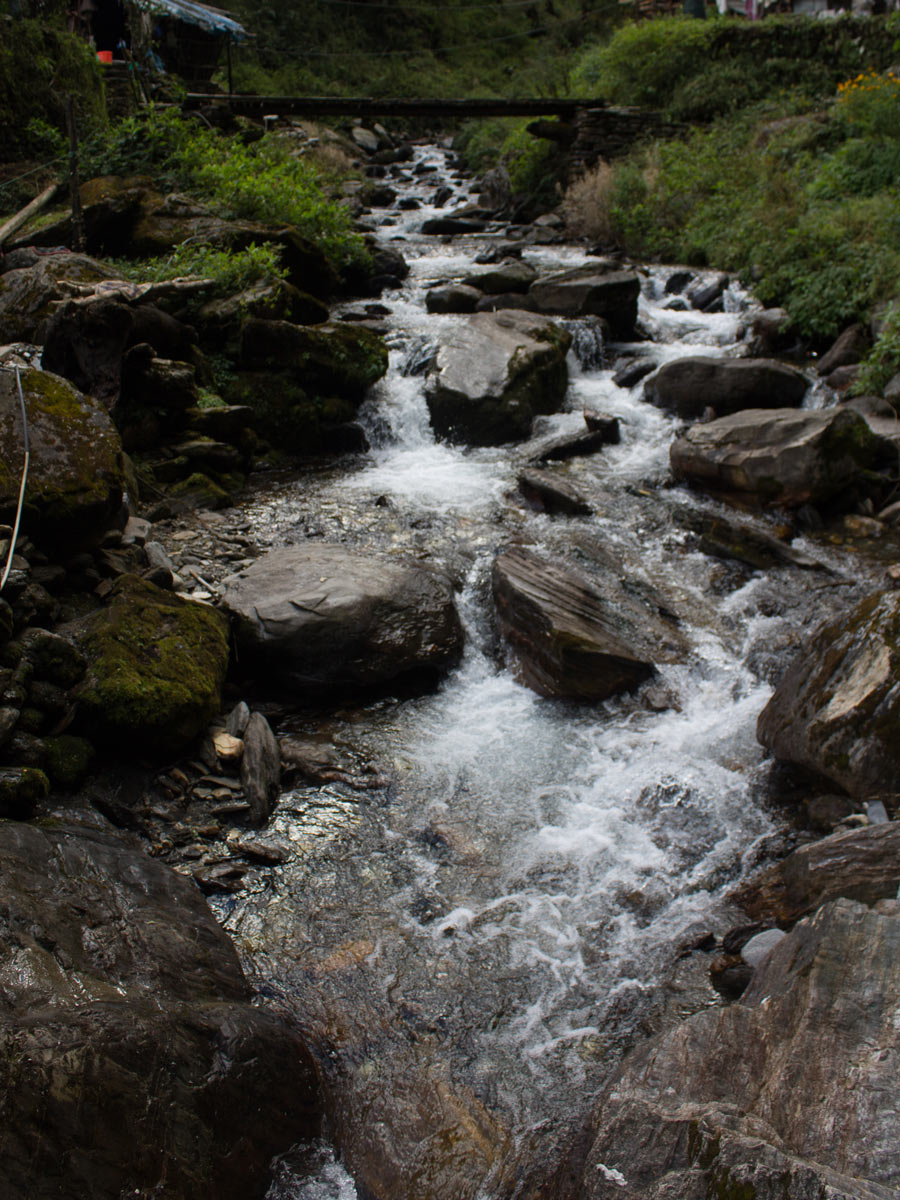
Poon Hill Trek Map
Here’s a recorded map route of the Poon Hill Trek route with each night’s stop along the way. The grey line indicates sections done in a vehicle, and the orange shows the trekking route.

Best Time to Do the Poon Hill Trek
The Poon Hill Trek is located in central Nepal, a region that sees all four seasons. The ideal trekking season for this area is during autumn (September to November) and spring (March to May). Do your best to avoid going during summer or winter because the high-altitude areas are prone to landslides and avalanches; it’s also monsoon season during the summer, and trekking during this time is miserable.
If you can travel to Nepal for the Poon Hill Trek during Autumn, then go for it! The monsoon season will have watered all the alpine flowers— they will be lush and vibrant during fall. In autumn, the days are warm and clear, and the nights are cool. Spring is also ideal for trekking in Nepal when the weather is warm, but keep in mind that you may encounter some rainy afternoons.
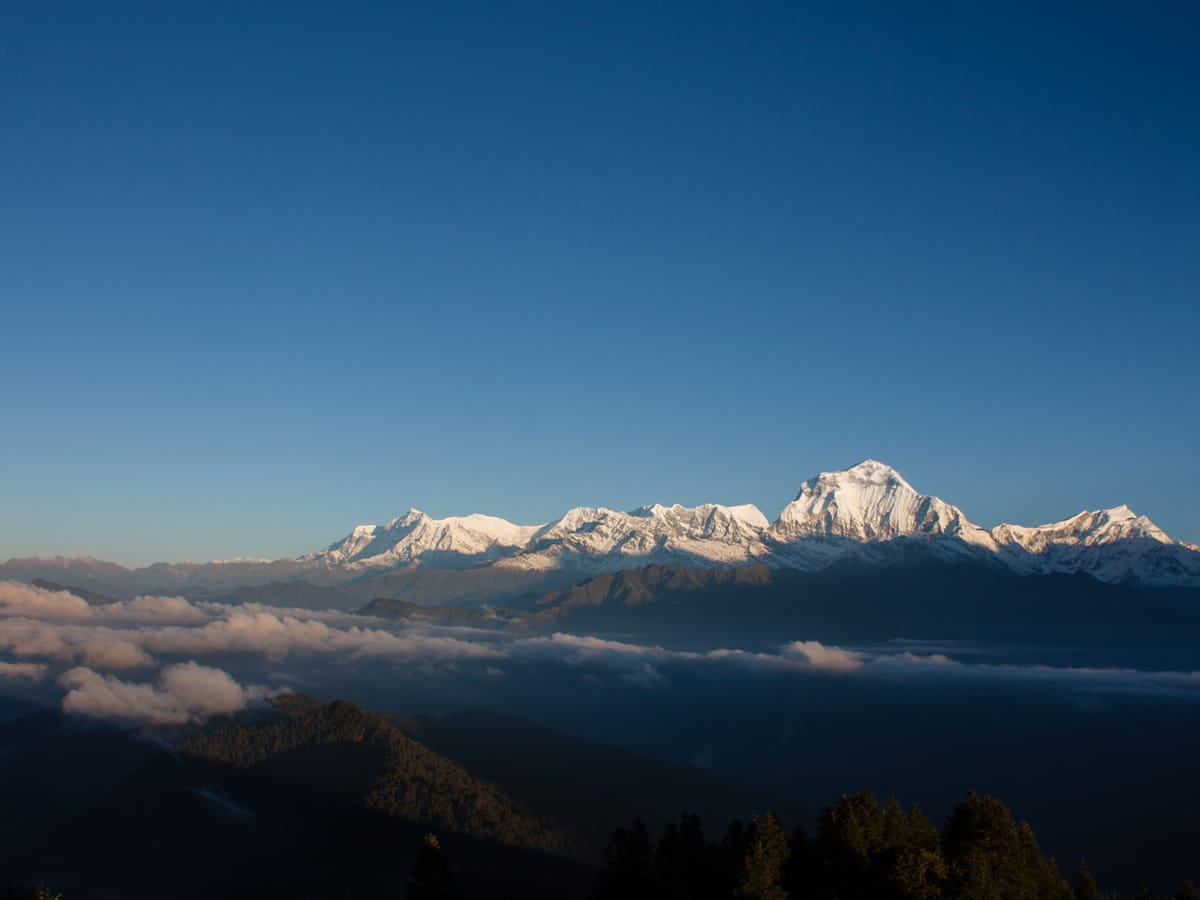
Accommodation on the Poon Hill Trek
The most common accommodations you’ll find on most treks in Nepal are called teahouses. These are mountain lodged with basic amenities—just what you need after a long day of trekking. They’ll provide a comfortable bed, and a shared bathroom, and a communal eating area. The good news is, they are incredibly budget-friendly, costing anywhere from $3 to $10 per night. Some teahouses outshine others, such as the teahouses listed in the itinerary above: Day 1 at Laxmi Guest House, Day 2 at Snow View Lodge, and Day 3 at Super View Lodge.
Staying at a teahouse has its pros. You’ll meet other trekkers each night, and you can carry less gear since you don’t need a tent or cooking gear when staying in teahouses. Each teahouse will have meals available from a range of menu items, some local and some western, to appeal to trekkers from all around the world. If you are carrying electronics with you, you’ll pay a small fee if you want to charge them. And if you desperately need a hot shower, a small fee is attached to that, too—and there could be a power outage. One thing you can count on, though, is absolutely breathtaking views. You’re sleeping in the Himalayas!

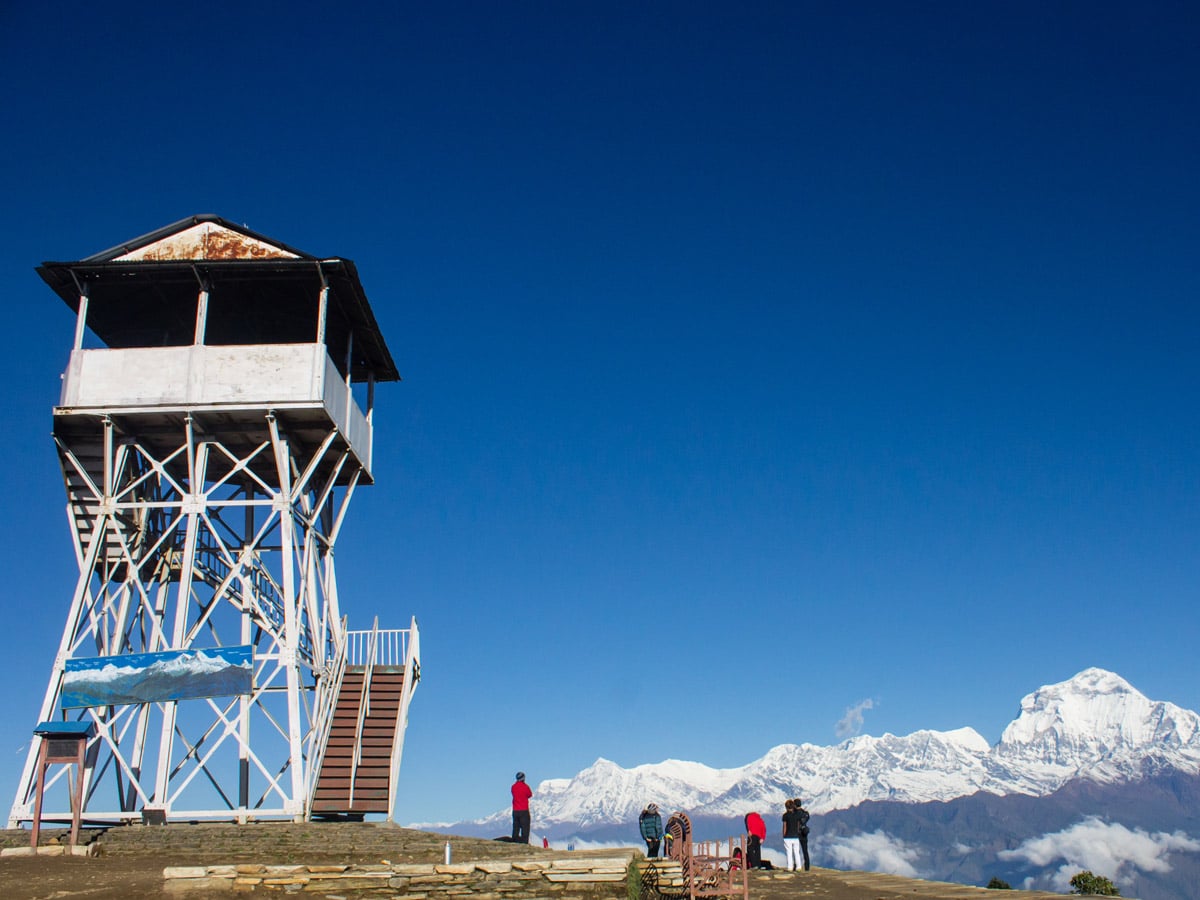
Poon Hill Trek Costs
Your budget should be around $365 to $405 to trek Poon Hill over 4 days, including transportation, food, permits, visa, guide, and porter.
- Food: $15–$25/day x 4 = $60–$100
- Transportation: $20 (one-way) x 2 = $40
- TIMS card: $8.35
- ACAP permit: $25
- 15-day visa: $30
- Guide: $30/day x 4 = $120
- Porter: $20/day x 4 = $80
- TOTAL: $363.35–$403.35
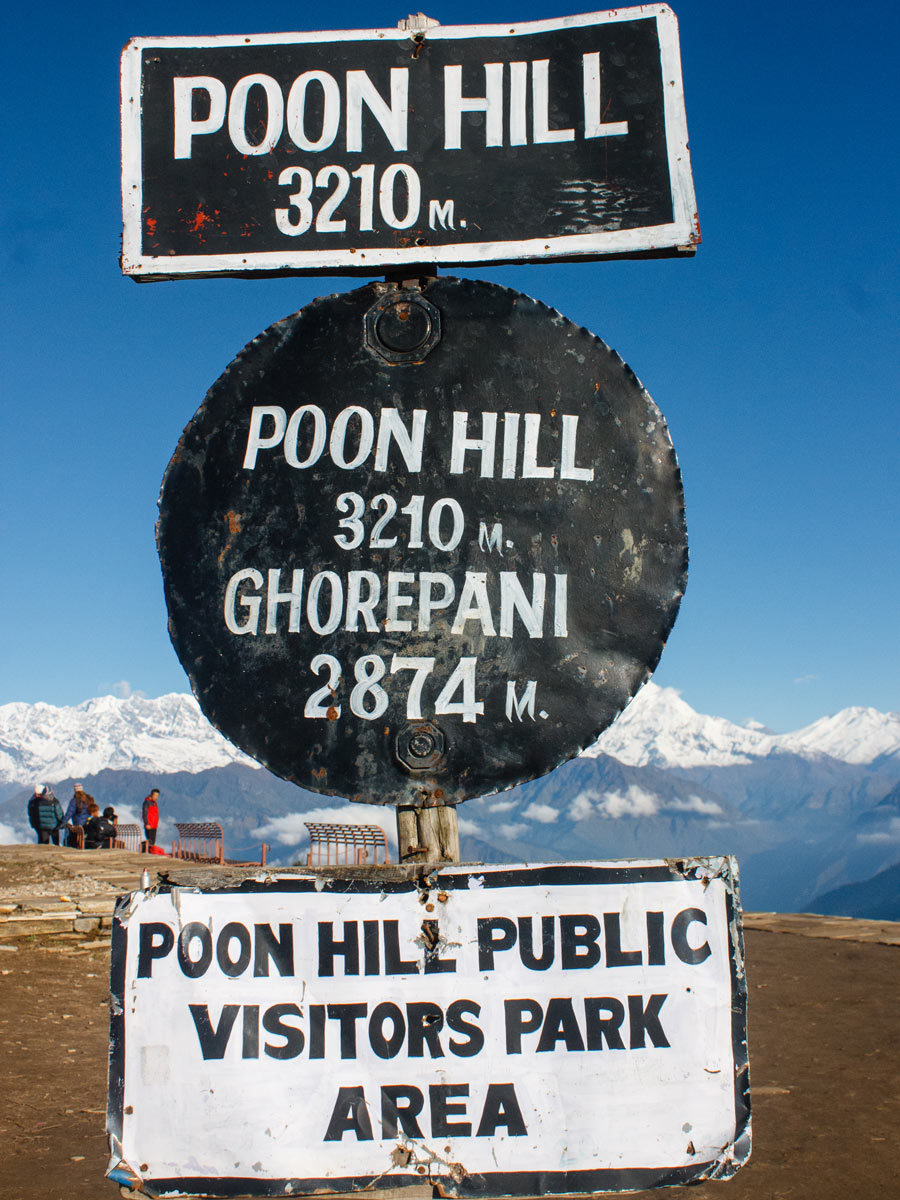
Poon Hill Trek Tour
The Poon Hill Trek can be completed on your own by finding guides and porters and handling all the paperwork involved yourself. For some people, this is part of the joy of travelling. For others, this is a huge burden—and luckily, there’s a way to avoid all that: join up with a tour company and let the organization handle all the details.
If Nepal is on your list, but planning the trip overwhelms you, these Nepal Tours may inspire you. All you need to do is pack your bag and enjoy the mountains. Adventure tours help you enjoy your limited vacation time by handling the itinerary for you. It’s a super easy and gratifying way to see the world. Here are some pros and cons to choosing a tour.
Pros of trekking with a tour company
When you join a tour, you can trust that the guides have been vetted. They’re experienced professionals with whom you can engage, ask questions, and learn so much more. Don’t waste time trying to sift through all the available guides and porters on whom you have no information. With a tour, you can read reviews and pick which one suits you. Adventure tours are stress-free—you don’t need to think about where you’ll sleep, carry a map, or even think about what you’ll eat (except the occasional snack). The details are taken care of! Just pack your bag (see our recommended packing list below) and enjoy the breathtaking Himalayas without being burdened by logistics.
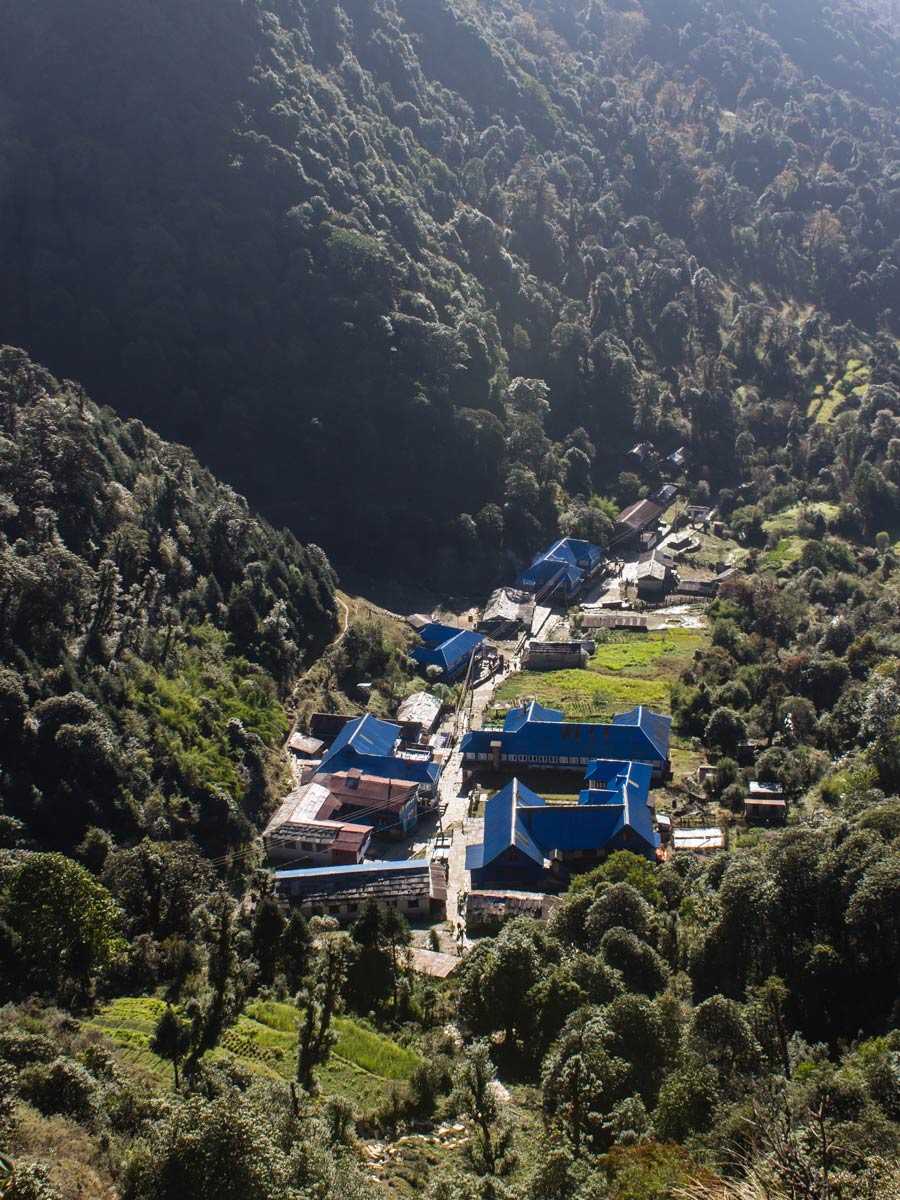
Cons of trekking with a tour company
If planning trips excites you, then a tour may not be for you. And if you enjoy some flexibility, like staying an extra night or wandering as you please, you may prefer going on your own rather than adhering to the fixed schedule of an adventure tour.
Recommended Poon Hill Trek Tour
One of the tours available for trekking Poon Hill is an unforgettable 11-day journey, extending what is normally a 4-day trek into a week-and-a-half long experience. The Ghorepani and Poon Hill Trek invites you to take your time immersing in this magical part of the world. It includes sightseeing in Pokhara and an extended route from Nayapul trekking back to Pokhara over 6 days. The tour operator is a certified company that uses local guides and supports the local communities.

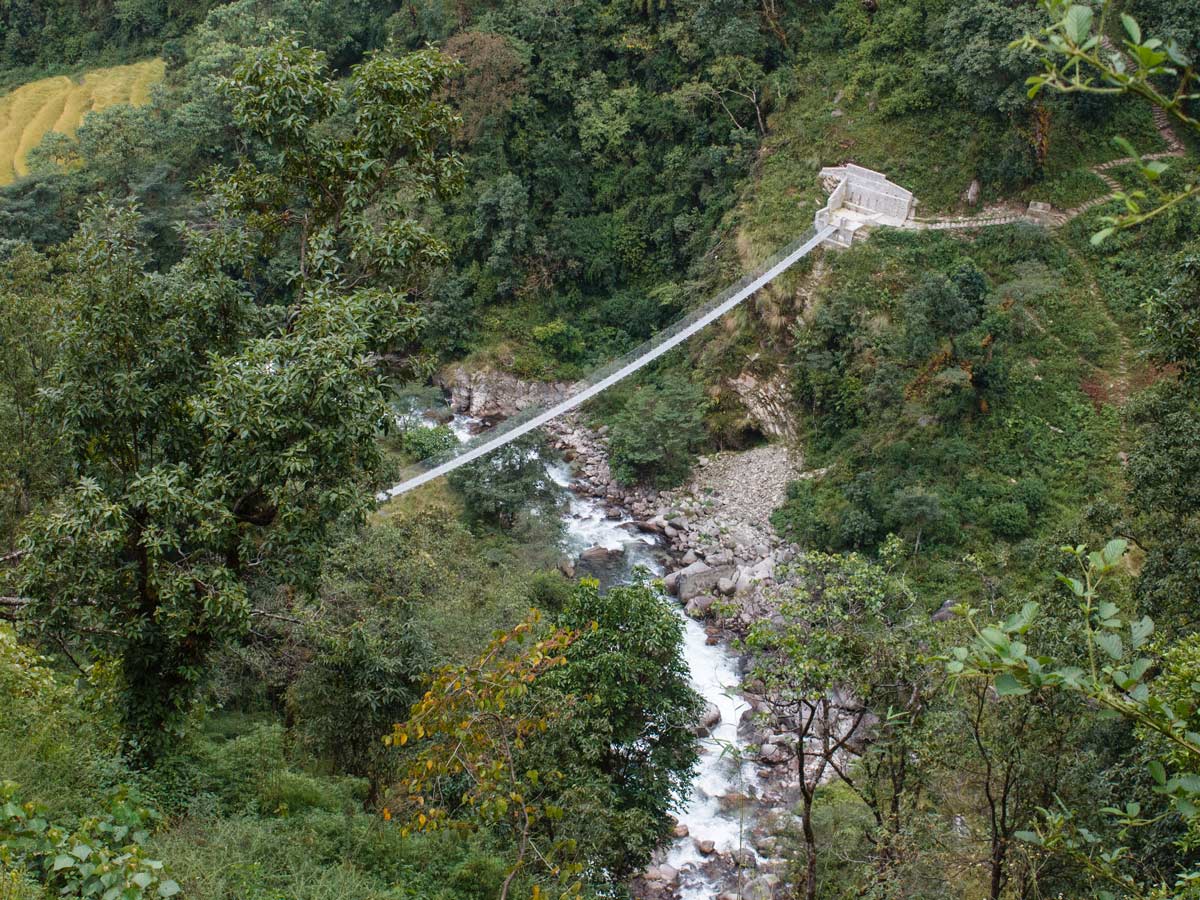
Adventure Travel Insurance
Any time you venture from your home, you want to feel safe, and travel insurance is a sure-fire way to maintain that sense of security. For the adventure tours listed on our marketplace, travel insurance is mandatory, so we recommend purchasing insurance, whether going alone or with a tour company.
After racking up many years of adventure travel, the 10Adventures team prefers the insurance provider World Nomads. Their values resonate with us as an adventure travel company. Some other insurance providers don’t provide coverage for certain extreme sports, so you’ll have to read the policy very carefully to ensure proper coverage. We choose World Nomads because they have policies that cover activities like trekking, which is very important to us. No matter which provider you use, travel safely.
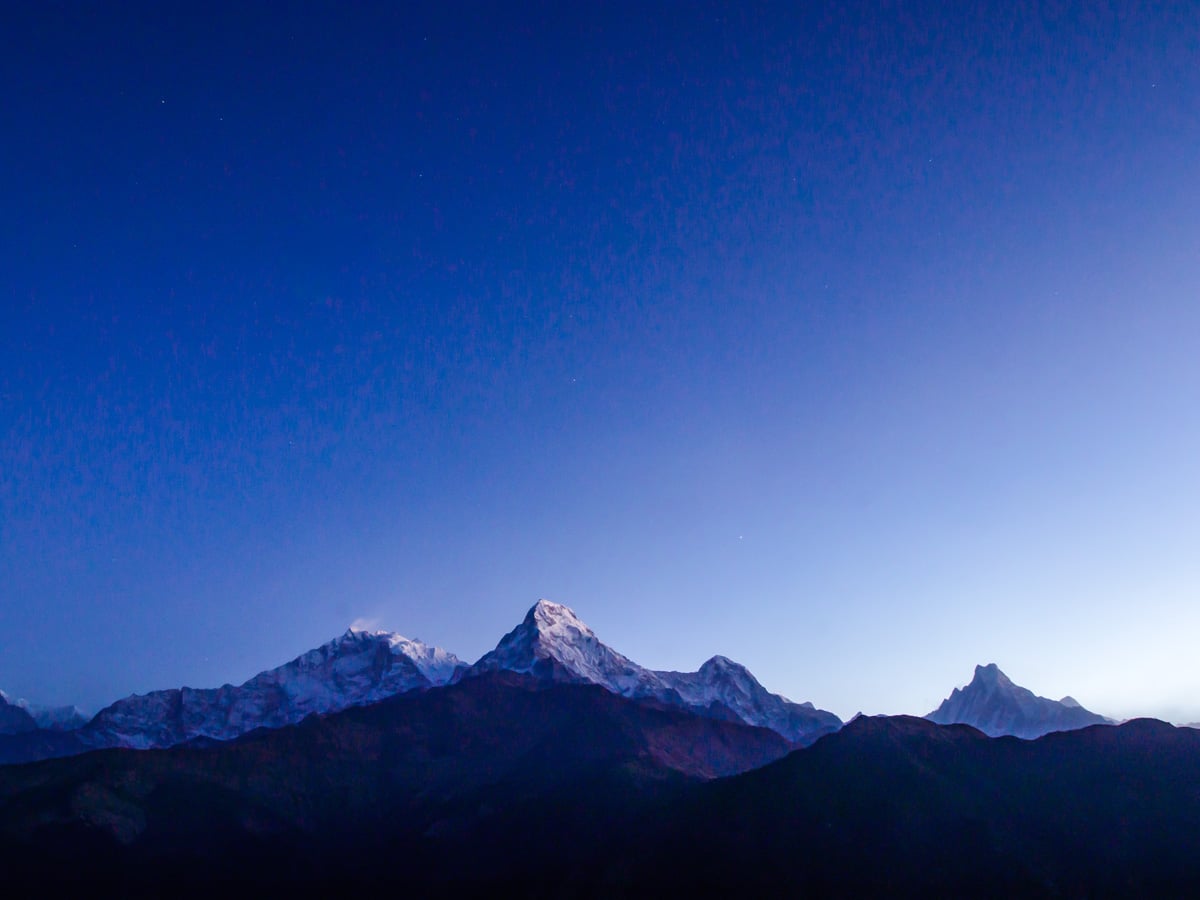
Recommended Packing List for the Poon Hill Trek
On multi-day backpacking trips, you want to keep weight down in your pack as much as possible. Because you’ll be staying in teahouses, this cuts the weight down significantly because you won’t have to carry a tent or cooking gear. Here’s a list of what you should pack for your Poon Hill Trek.
Gear + Clothes
- Backpack 40–50 litres with rain cover (try to avoid anything larger, so you’re not tempted to fill the space)
- Sleeping bag
- Sleeping bag liner
- Hiking boots (broken-in and comfortable)
- 5 x Hiking socks (1 pair per day + 1 clean and dry for nights)
- 4 x Underwear
- 2 x Sports bra (women)
- 2 pairs of trekking pants
- 1 pair of comfy pants for nights
- 2–4 shirts (depending on how often you need to change)
- Long-sleeve thermal
- Thermal pants
- Packable puffy jacket
- Rain poncho
- Waterproof jacket
- Gloves
- Buff
- Cap
- Quick-dry microfibre camp towel
- Slides (slip-on sandals) for nights in teahouses when you take your boots off
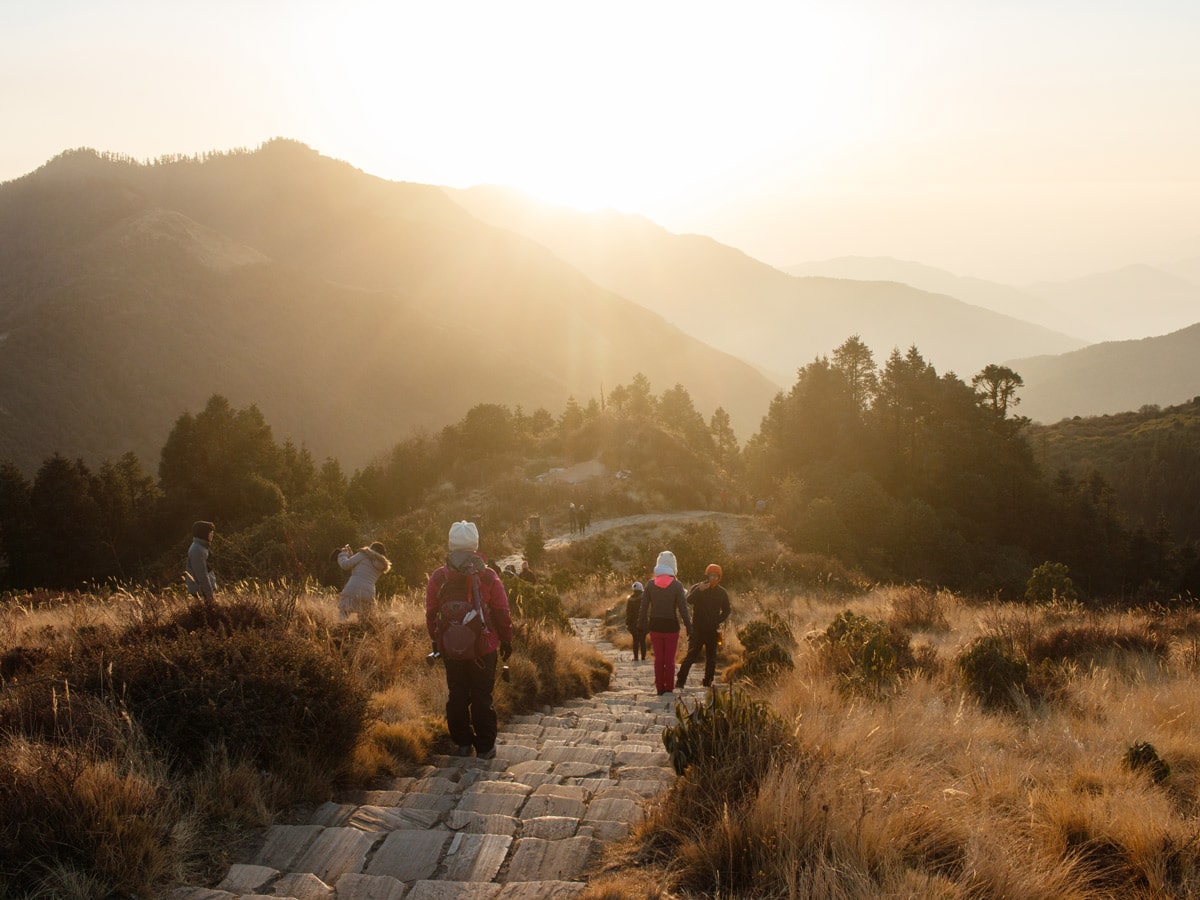
Accessories
- Trekking poles
- Toiletries: toothbrush, toothpaste, hairbrush, soap (shampoo if you want to wash your hair, but most likely, you will wait until the end of the journey to shower!)
- Collapsible water bottle or bladder
- Sunglasses
- First aid kit: sunscreen, band-aids, lip balm, ibuprofen, Imodium
-
- Insider tip: wrap a small roll of duct tape on your trekking pole + use to prevent blisters. Place it on hot spots where blisters may form. Your socks will glide on the duct tape and prevent blisters from forming. Do not put duct tape on already broken skin! That will be very painful to peel off.
- Hand sanitizer
- Headlamp
- Passport + important documents
- Toilet paper (not always available)
- Cash (no ATMs in the mountains)
- Water purification tablets (you can buy purified water, but it is more expensive)
- Electrolytes/Nuun tablets
- Snacks (although you can purchase these along the way, they get more expensive as you get further into the mountains)
- Plastic bags (for wet clothes, dirty laundry, or garbage)

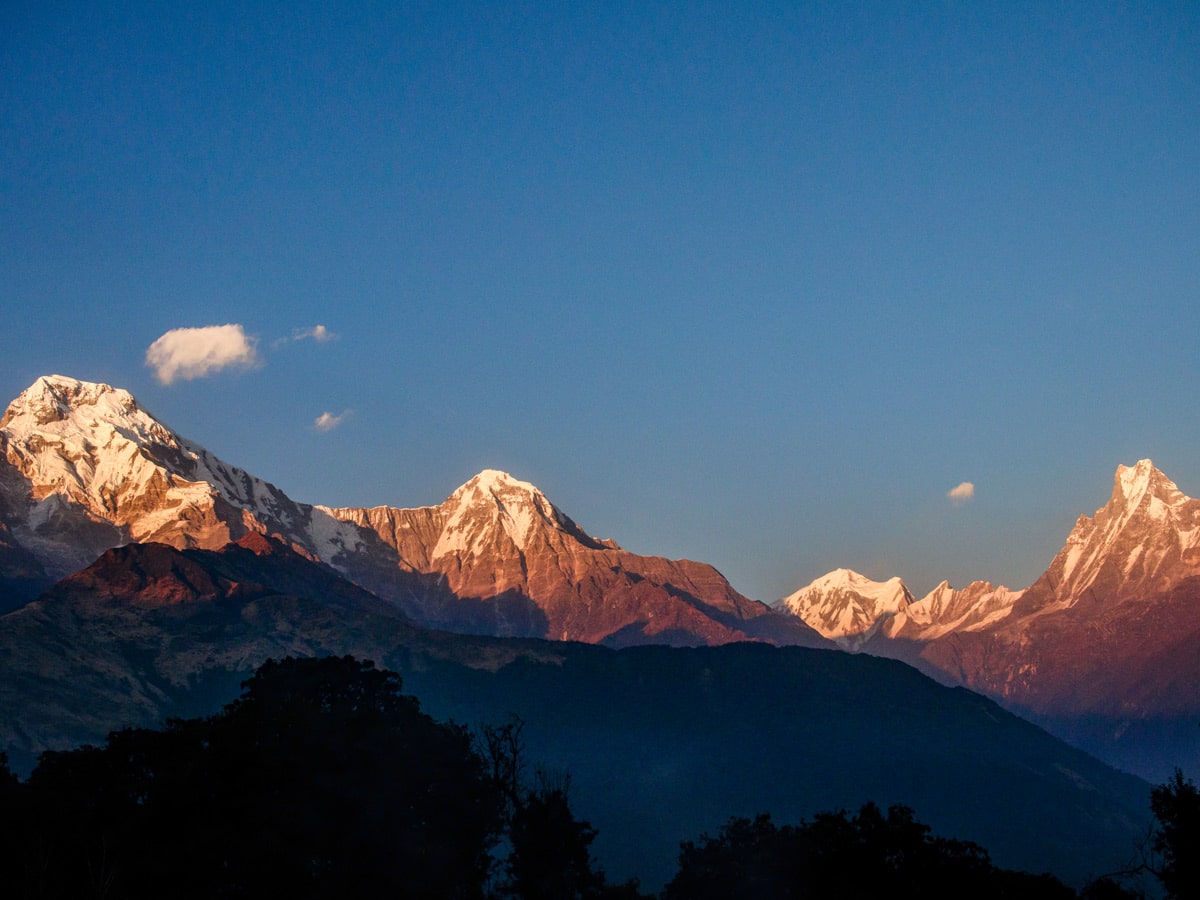
Outro
The Poon Hill Trek is one of the more manageable trekking routes in the Himalayas as the altitude doesn’t exceed 10531ft, whereas some other treks lead you much higher. Whether you venture out on your own or with an organized adventure tour, the Poon Hill Trek will be stamped in your memory forever—especially witnessing that epic sunrise! If you are keen to trek, but the Poon Hill Trek doesn’t quite fit your style, check out some of the best treks in Nepal for inspiration. Happy Trails!
Check out more related articles:
-
Trekking in Nepal Articles
Thinking about a trek in Nepal? Check out these guides to learn more and have an incredible trip to the Himalayas.
Nepal Trekking Guides
- Guide to the Best Treks in Nepal
- When is the best time to trek in Nepal
- How to prepare for trekking in Nepal
Nepal Trekking Route Guides
- Annapurna Basecamp Trek
- Annapurna Circuit
- Everest Base Camp Trek
- Langtang Trek
- Mustang Trek
- Poon Hill Trek
Adventure Tours in Nepal
Check out this selection of great tours in Nepal, from classic bucket-list trekking tours, to unforgettable bike rides through the Himalayas.


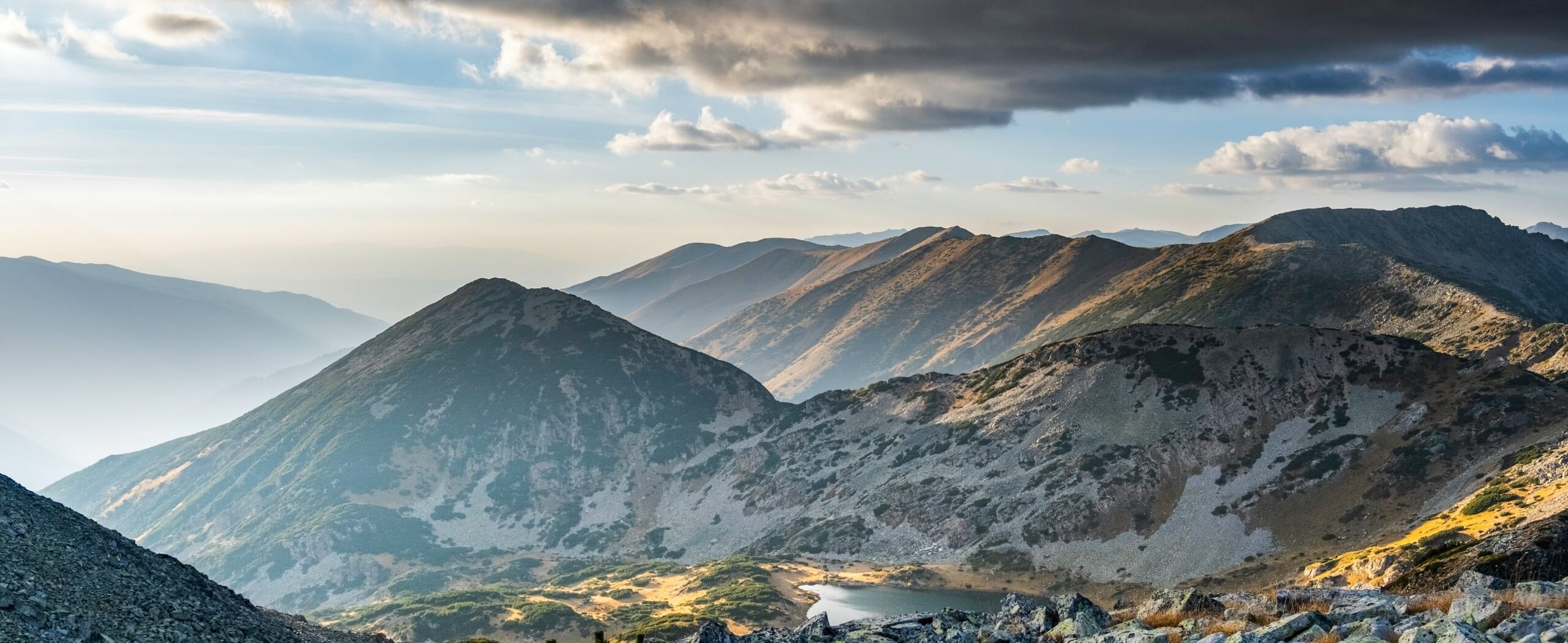


Comments